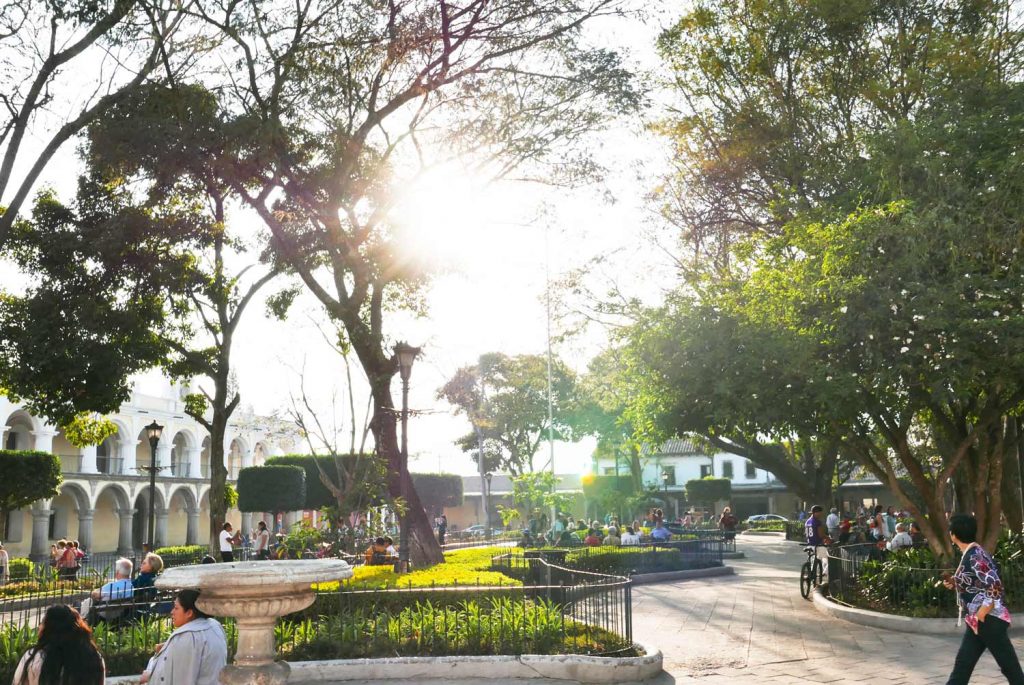YYou don’t want to read five books about the history of a country? But when you visit, you would like to have a basic understanding of the people that are living there and what they have been through? I am one of you. So let’s call this a history of Guatemala for dummies like me.
What is the most important thing to know about Guatemala?
Its history is shaped by Mayan tribes, and they still represent the majority of the population. They have exotic names such as the Achi, Akatek, Chuj, Ixil, Kaqchikel or Tz’utujil. These are the people that actually build the first populations and civilizations. Indeed, the current major tourist attractions of El Mirador (between 800BC and 100AD) and world famous Tikal (constructed around 250AD).
And then the Spanish came here as well, uninvited?
Exactly. It’s impossible to overestimate the impact of the Spanish conquest. They arrived in Guatemala in 1523. As elsewhere, they betrayed local allies, killed the indigenous ruthlessly or infected them with European diseases. Despite all of that, some Mayan tribes remained their own culture (example: the Itzaes, who hid on the island town of Flores, now also a beloved tourist destination).
Independence and happyness ever after?
Not exactly. The revolt of 1821 purged the country of the Spanish. But it didn’t remove the three problems that Guatemala is probably still dealing with at the moment, two centuries later:
- the power of the church
- A Hispanic upper class and an (indigenous) lower class
- No economic force on the world markets
Several presidents tried to change that until 1954, but they only succeeded partially. You will find Plaza Morazan everywhere in the country, named after the president between 1830-1839. He tried to narrow the gap between social classes, until the conservatives ousted him.
A century later general Jorge Ubico was elected, who built basic infrastructure for social security and health systems (before he was forced into exile). And philosopher Juan Jose Arevalo took those facilities to the next level with a bureau for indigenous affairs and liberal laws. But the poor guy had to fend off 25 coup attempts between 1945 and 1951.
You mentioned 1954. Doesn’t sound good.
A covert operation by the CIA, the American foreign intelligence service, forced the democratic government out. Partially this was to defend the business interests of the US firm United Fruit Company, who were the owners of big chunks of land in Guatemala and were opposed to the upcoming land reform (which thus never took place).
But partially it was also to make sure that ultra-conservatives could remain in power. Especially because when the Civil War in Guatemala started in 1960, the fighting was done by left-wing guerilla groups. These were considered to be communists by the Americans, and needed to be contained by any means possible. Especially Ronald Reagan and general Jose Efrain Rios Montt were very close: the latter was responsible for the implementation of the ‘scorched earth’ policy in 1982, with 400 villages burnt down and genocide committed against Mayan groups.
You are no friend of the Americans, right?
Absolutely. In entire Central America they have been pursueing their own political and economical interests, interfering in domestic matters and very often making things worse.
When and how did the Civil War end?
Well, it happened in stages. In 1985 finally a government was elected democratically. But the military were granted immunity for the scorched earth policy and other atrocities that happened.
Then in 1996 a peace deal was struck with the URNG, four guerilla groups that were named Guatemalan National Revolutionary Unit. By that time, 200,000 peope died in the violence, one million were homeless. The resulting implementation of basic social services, healthcare and education and the acknowledgement of indigenous rights were just the start of a difficult way back for Guatemala.
Where are we now?
Facebook’s relationship status would say ‘it’s difficult’. Improvements have been made. But poverty and a lack of good education are a huge problem for the country to be economically competitive.
Then there still is the question of land ownership. Locals will tell you that seven families own Guatemala. 3% of the population owns 70% of the land used for agriculture. That makes for huge income differences between the small upper class and the mostly indigenous lower class.
On top of that, violence and corruption are new problems. Violence is very often drug-related, and especially manifest in parts of the capital Guatemala City. Corruption is to be found at the highest levels: in 2015 president (and former civil war general) Otto Perez Molina was impeached and arrested in 2015 after a report of the UN anti-corruption agency CICIG.
That agency had made progress against corruption in recent years, but subsequent presidents cracked down on CICIG and they had to leave the country in 2019. This again was made possible by the American government of Donald Trump, who needed the support of the Guatemala government in their fight against immigrants.
Any reason to be positive?
The strange thing is that in day-to-day life you don’t notice the political upheaval. People in the streets are genuinely friendly and relaxed. And with strong coffee production and several unique tourist attractions the potential for an economic upswing in Guatemala is there. But as long as the huge endemic problems are not solved, that won’t happen.

